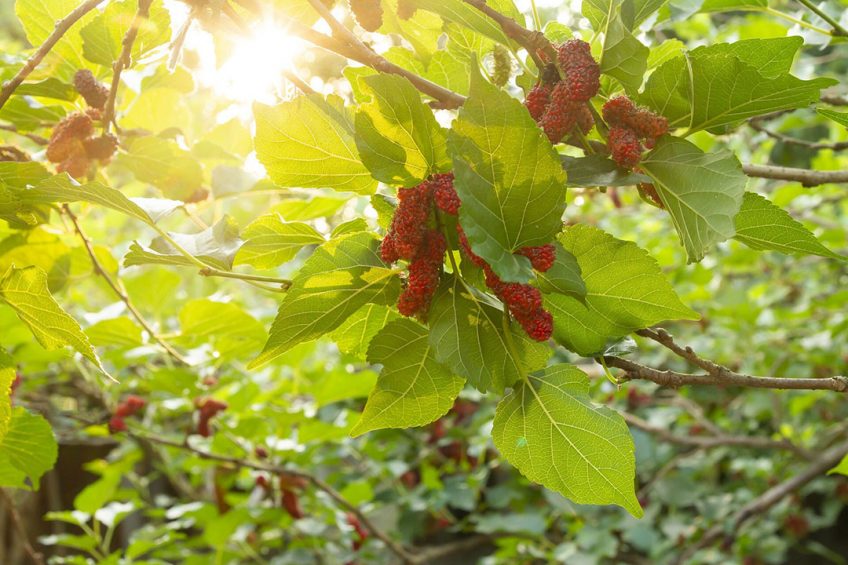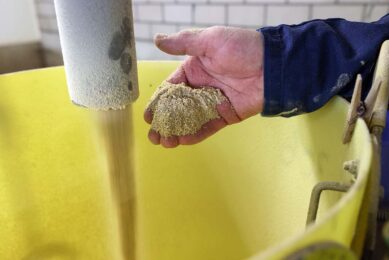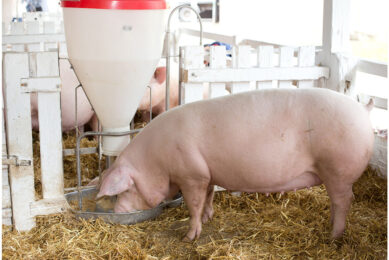Mulberry leaf powder as feed for finishing pigs

In the search for alternative ingredients for pig diets, Chinese researchers recently put mulberry leaves to the test. Mulberry leaf powder, they concluded, can be used as feed ingredient for finishing pigs.
The scientists, attached to several research institutes in Changsha, published their study in the peer reviewed journal Animal Nutrition. They wrote that, in the light of a rising demand for sufficient and inexpensive livestock feed, several unconventional feed sources are being considered for their use to (partially) replace cereals.
Mulberry trees a source of protein for other animal species
Mulberry trees (Morus alba L.), they wrote, are potential protein sources for herbivores and mulberry foliage is a potential supplement of fermentable energy and protein for sheep. Trials have also been done to measure the effects on laying hens. But how would that be with pigs?
That is why the test with finisher pigs was designed. The research team harvested fresh mulberry leaves. They were dried at 60°C for 4 days in a heat drier room, crushed and then evaluated for their nutritional composition, which was:
- 23.50% dry matter;
- 22.66% crude protein;
- 4.93% ether extract;
- 12.06% crude fibre;
- 9.60% crude ash;
- 15.27 MJ/kg digestible energy.
Dietary trial with 180 black pigs
The team worked with 180 black pigs of the Chinese local breed Xiangcun with an average initial body weight of roughly 72 kg. They randomly assigned 1 of 5 treatment groups to the animals. The pigs received either a control diet of corn, soybean meal, and wheat bran, or a diet in which these components were partly replaced by 3%, 6%, 9%, or 12% mulberry leaf powder. Diets were offered to pigs in pellet form, ad libitum, for 50 days.
No effect on pig growth performance
The researchers concluded that the inclusion of dietary mulberry at levels below 12% “did not change the growth performance, but improved the oxidative stability in finishing pigs.”
They added that mulberry leaf supplementation “also affected the expression of genes involved in lipid metabolism and mitochondrial uncoupling in the porcine skeletal muscle. These changes can beneficially regulate the pork fatty acid profile and prevent lipid oxidation, which has a positive impact on the health of consumers.”
Mulberry trees: Fast-growing plants all over the world
Mulberry trees are fast-growing deciduous plants widely cultivated in many parts of the world. In China, mulberry cultivation areas are estimated to cover more than 1 million ha, and the biomass yield of fresh mulberry leaves is about 25-30 tonnes/ha/year.
The authors added that mulberry leaves are well known as feed for silkworms, as well as for their use in Chinese herbal medicine for its antioxidant, antimicrobial, and antihyperlipidemic properties.
The researchers involved in the study in Animal Nutrition, were Yingying Liu, Yinghui Li, Yi Xiao, Jianhua He and Dingfu Xiao, Hunan Agricultural University, Changsha, China; Yinglin Peng and Chen Chen, Hunan Institute of Animal and Veterinary Science, Changsha, China; and Yulong Yin and Fengna Li, Chinese Academy of Sciences, Changsha, China. Yingying Liu is also attached to the Chinese Academy of Sciences and the Hunan Institute of Animal and Veterinary Science; Yulong Yin is also attached to the Guangdong Academy of Sciences, Guangzhou, China.
 Beheer
Beheer









 WP Admin
WP Admin  Bewerk bericht
Bewerk bericht